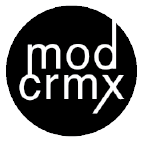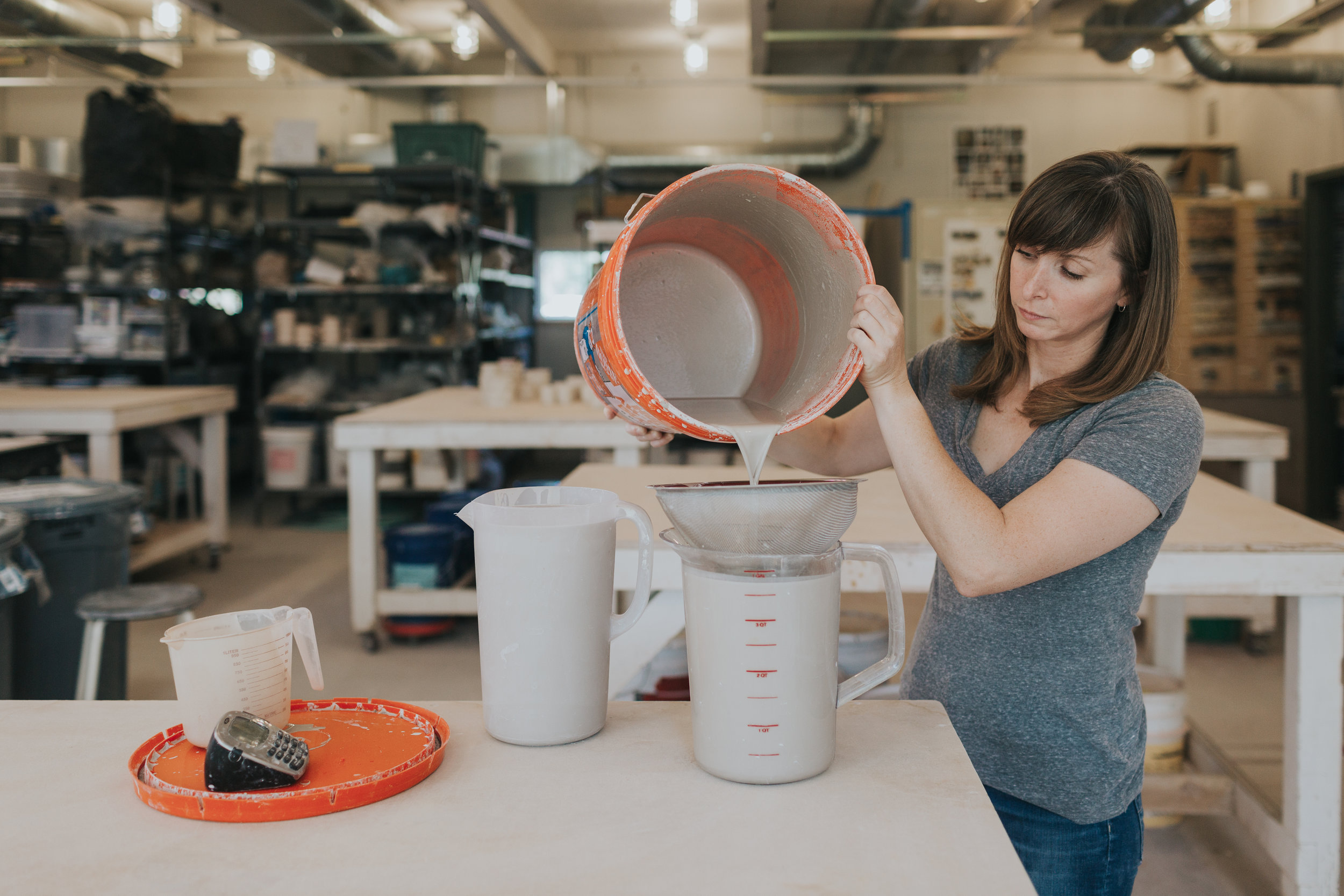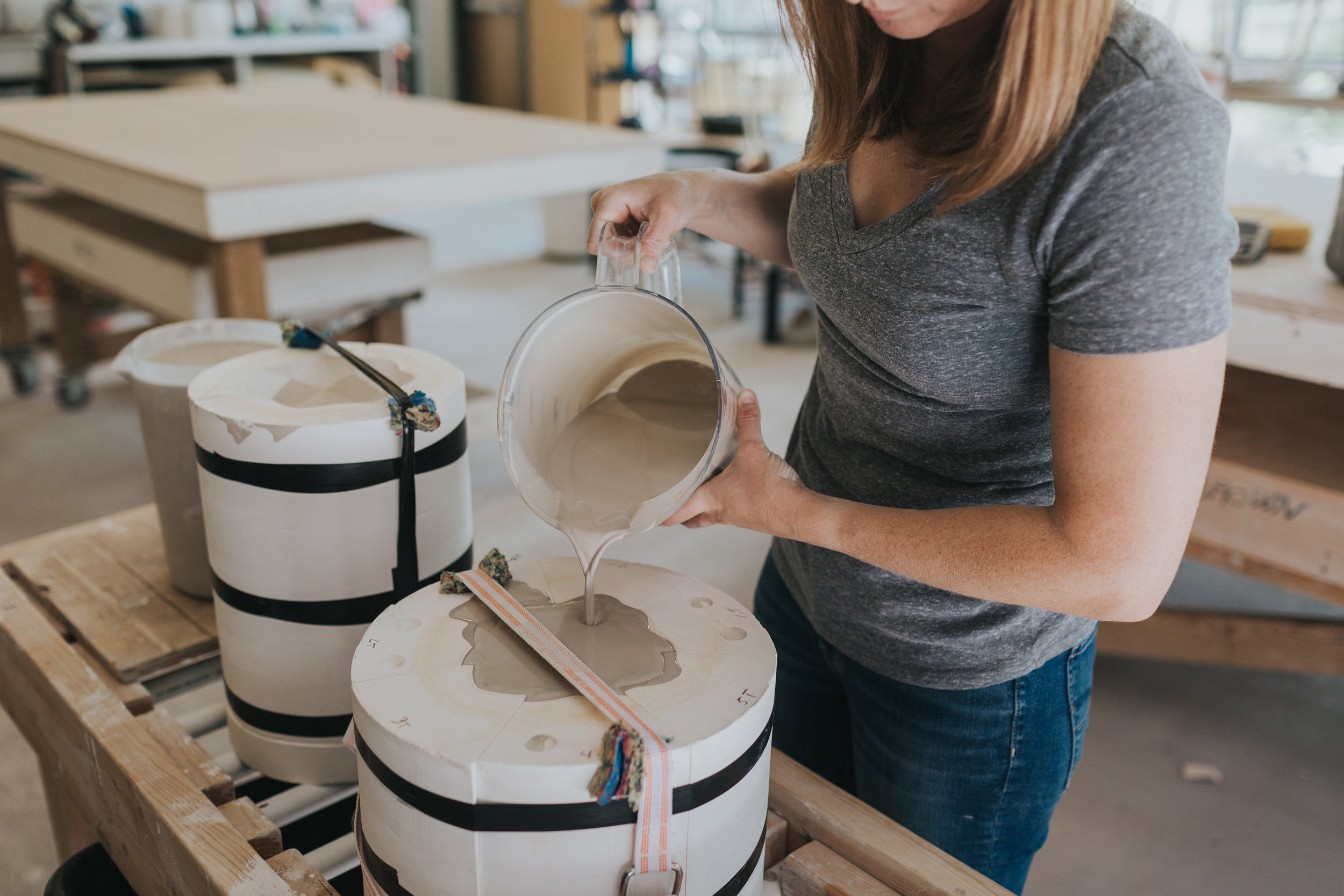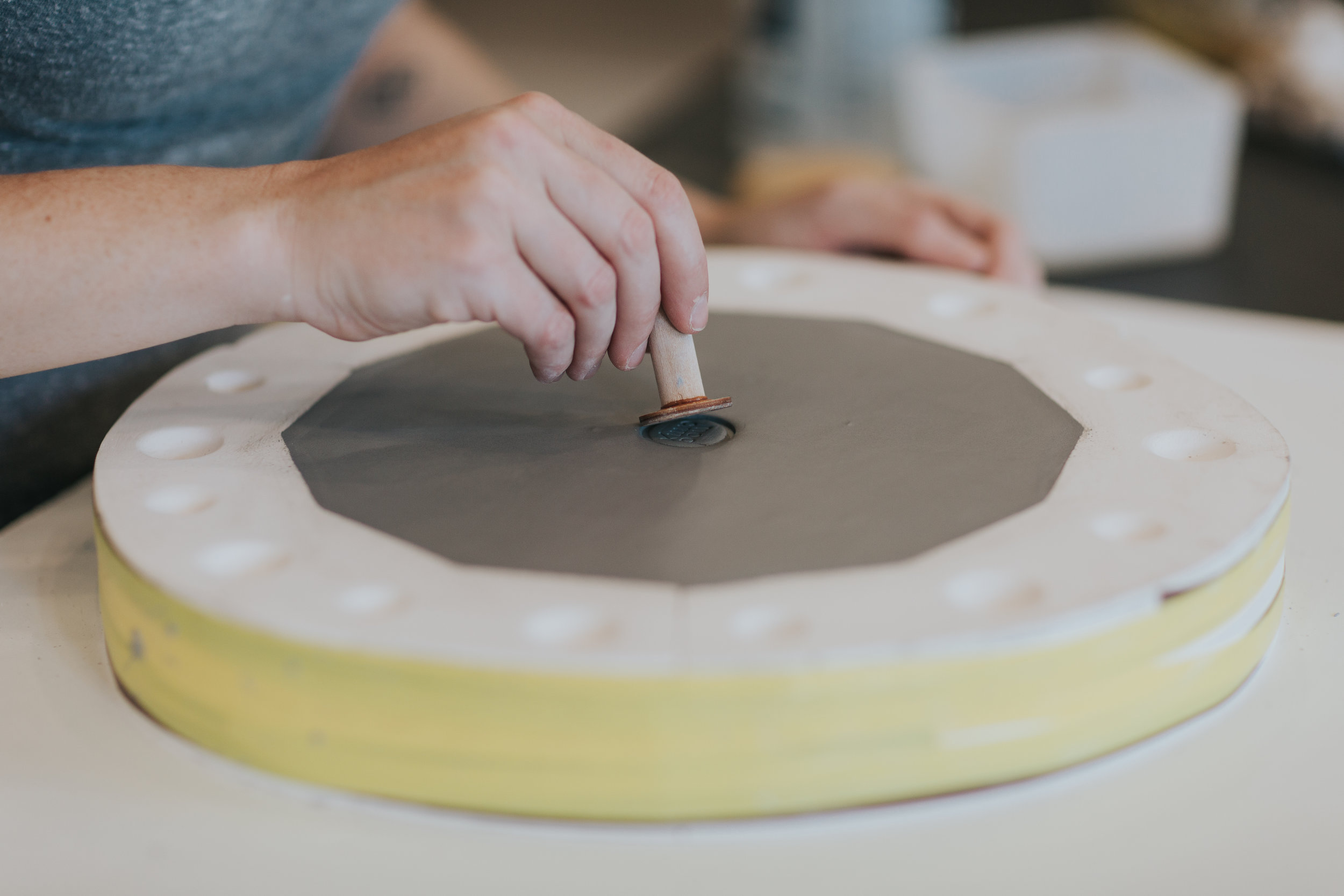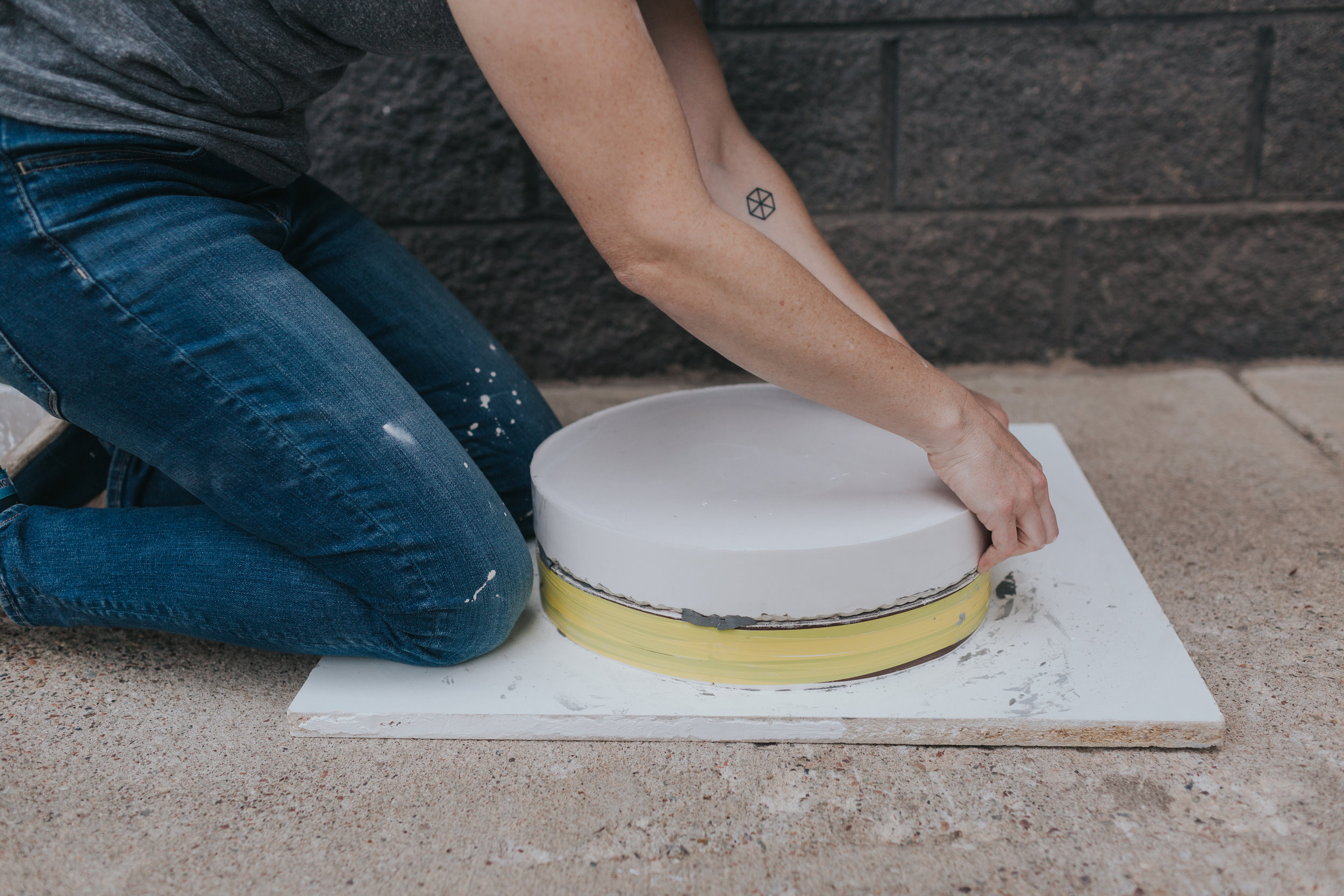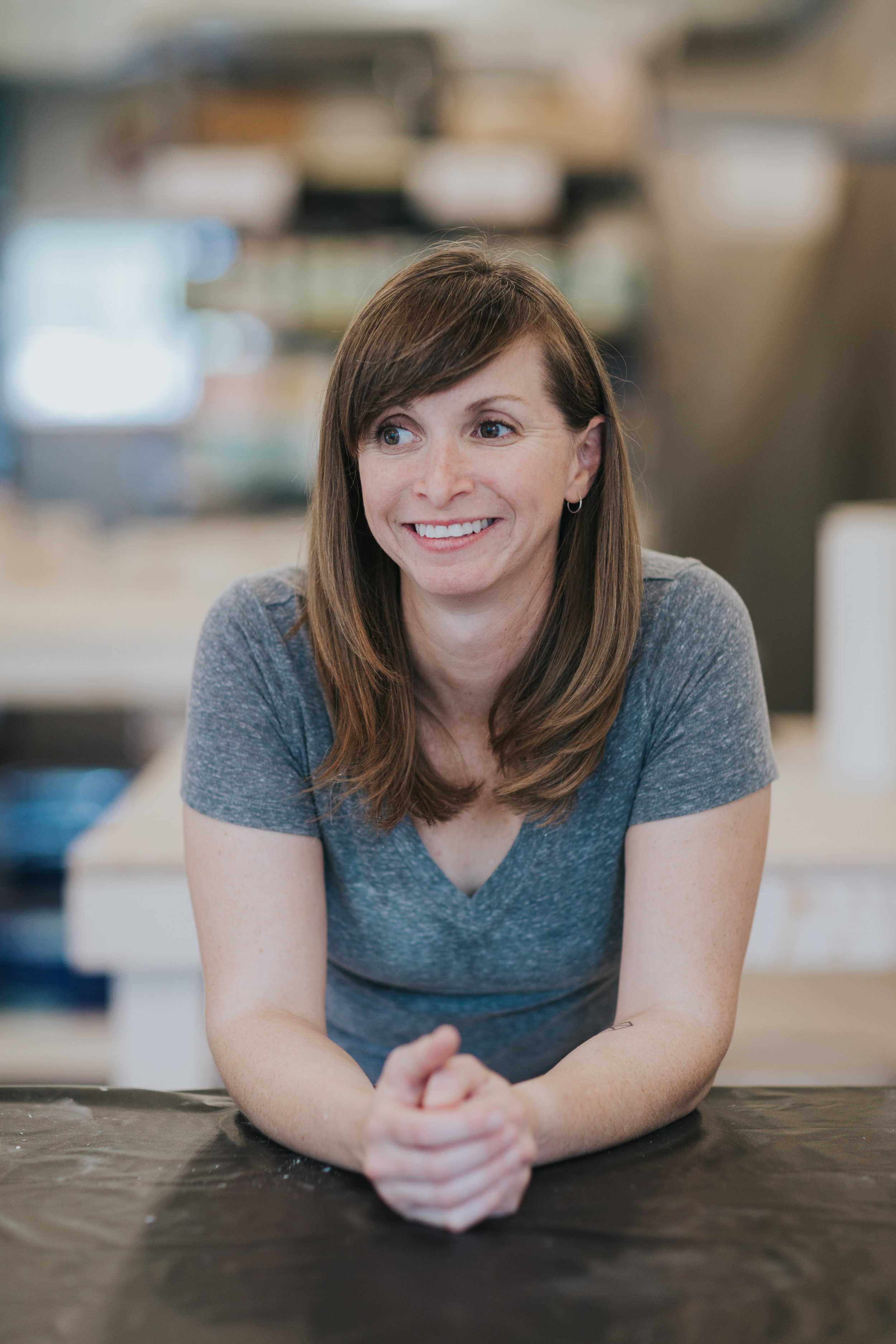The Journey
Hi, my name is Liz and I am the maker behind MOD CRMX, making modern handmade ceramics in Aspen, CO. It has been an interesting journey. After graduating from The University of Wisconsin at Madison with my MFA in Sculpture, if you told me I would be making functional ceramics in a small mountain town, I would have thought you were crazy. I came to The Roaring Fork Valley for an artist residency at The Anderson Ranch Arts Center in the fall of 2014 and moved back to the Valley in 2015 for a new mountain adventure and found community, inspiration and gratitude.
100% Handmade
Every piece starts with a vision, an idea of a form that is only possible to achieve through digital fabrication. Inspired by the geometry of Mid Century Modern Design, I create forms using a 3d printer, then transform them into modern ceramic ware through the mold making and slip casting processes. This process is at the intersection of art and industry. It is a form of mass production that allows for highly complex forms to be produced in an extremely precise way. I design in Rhinocerous and once the file is complete, it is 3d-printed in PLA, which is a fully biodegradable thermoplastic polymer consisting of renewable raw materials. Once the 3d print is completed, I spend about a day finishing the print, erasing the presence of the digital process. Once the print is smooth, it is time to make the mold. Ceramic slip casting molds are always made with plaster because it is a ‘thirsty’ material. Once the mold is finished, the plaster has to dry out completely from the inside out, this can take up to a week. Once the plaster is ready, it’s time to cast. I use “slip” which is a liquid clay that gets poured into the mold. The plaster then absorbs the water in the clay mixture and forms a shell. The thickness of the shell depends on several things, primarily the time the clay is left in the mold but also the saturation level of the plaster mold. Once the cast has reached its desired thickness the mold is turned over and the excess clay is drained from the mold. The clay cast will then dry inside the mold and start to shrink away from the plaster surface. This is when you can open your mold and remove the cast. I usually leave the cast to sit on my shelf, wrapped in plastic for 24 hours before I touch it again. Slip is a little more temperamental than bagged clay because we are asking it to go from a liquid to a solid in a short period of time, so I like to let it rest in its solid form before cleaning up any of the mold seams. From there I follow a typical bisque and glaze schedule, firing to Cone 6 (mid fire) Oxidation (electric firing).
